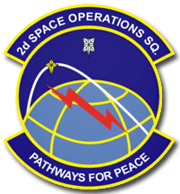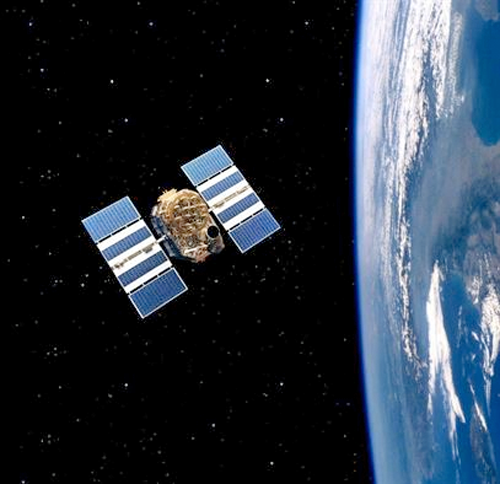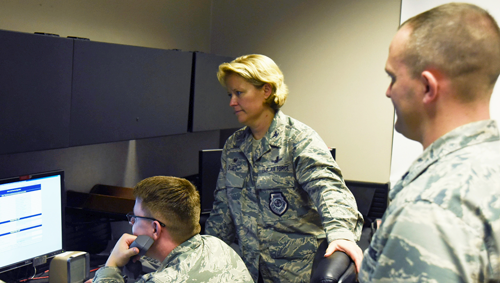
The 2nd Space Operations Squadron began the disposal of Satellite Vehicle Number 32, Inter Range Operation Number 6809, on June 5 and the satellite was fully disposed as of June 12.
The process required several days and each day focused on a different aspect of the disposal, such as placing the vehicle into a spin-stabilized configuration, firing thrusters to raise the orbit, depleting the vehicle of any remaining fuel and disconnecting the battery chargers, and then turning off the receivers.
According to 1st Lt. Cameron Smith, 2 SOPS bus system analyst, SVN 32 launched on November 22, 1992, and began transmitting its GPS signal on December 11 of that year, which means the satellite nearly tripled its design life of 7-½ years. SVN 32 orbited Earth for 24 years, six months and 23 days, according to Smith, but contributed to the mission for 15 years, 3 months and 9 days. SVN 32 was turned off pm March 17, 2008, due to failing clocks, the main payload component used to provide an accurate signal, and has been in the residual constellation since.

Artistic rendition of SVN 32,
“Our residual constellation are our on-orbit spares if you will. If a vehicle in the primary control needs to be replaced, we can remove the bad satellite from the primary control and add in the residual,” Smith said. “Based on bad clocks and a growing supply of new satellites, SVN 32 was moved from the primary ground control system and placed in a residual status. This was done in 2008, hence 15 years serving the mission, but 24 years on orbit.”
Because SVN 27 was disposed in mid-April, the short time frame between the two satellites did not allow for much expansion on the experimentation done on SVN 32.
“This was my first (disposal) as the Disposal Lead, so for the disposal itself, training our new personnel on the process while managing all the activities needed to successfully complete the maneuvers was the most interesting,” Smith said, then explaining that the vehicle could no longer produce and maintain its position, navigation and timing signal to meet standards.
“To better clarify, a block IIA GPS vehicle (like SVN 32) is launched with four clocks, one active and three redundant. SVN 32 had used three of the four clocks within the first four years of its life. We switched to the fourth clock in August of 1996 and limped through its decommission on March 17, 2008,” Smith added.

Col. DeAnna Burt, 50th Space Wing Commander, gives Senior Airman Brandon Myers, 2 SOPS satellite system operator, the final command to decommission satellite vehicle number 32 at Schriever Air Force Base, Colorado, Monday, June 12, 2017. First Lt. Col. Peter Norsky, 2 SOPS commander, observes the final command.
U.S. Air Force photo/Airman 1st Class William Tracy.
Senior Airman Brandon Myers, 2 SOPS, satellite system operator, helped with sending commands to the satellite that the contractors and officers requested. “The officers have to give the SSO's permission to send a command first, but we are the only ones who can physically send them,” Myers said, adding that the process was extremely smooth, especially with the support of the Satellite Vehicle Operators and contractors. “It has been very interesting, to quite literally taking a multi-million dollar piece of equipment in space and moving it into an entirely new orbit and after that, shutting it down. I am glad I was given the opportunity to participate in the disposal.”
Airman 1st Class Rachael Alvarez, 2 SOPS SSO, explained she did not notice a significant difference between the normal operations of a satellite and the disposal process, but the process has been sad nonetheless. “Watching the numbers get lower and seeing different colors flashing is a bitter-sweet death in our satellite family,” Alvarez said. “It was mostly bitter considering I've been commanding this one since the beginning of my SSO career in 2015.”
The active constellation continues to exceed standards for users around the world.

